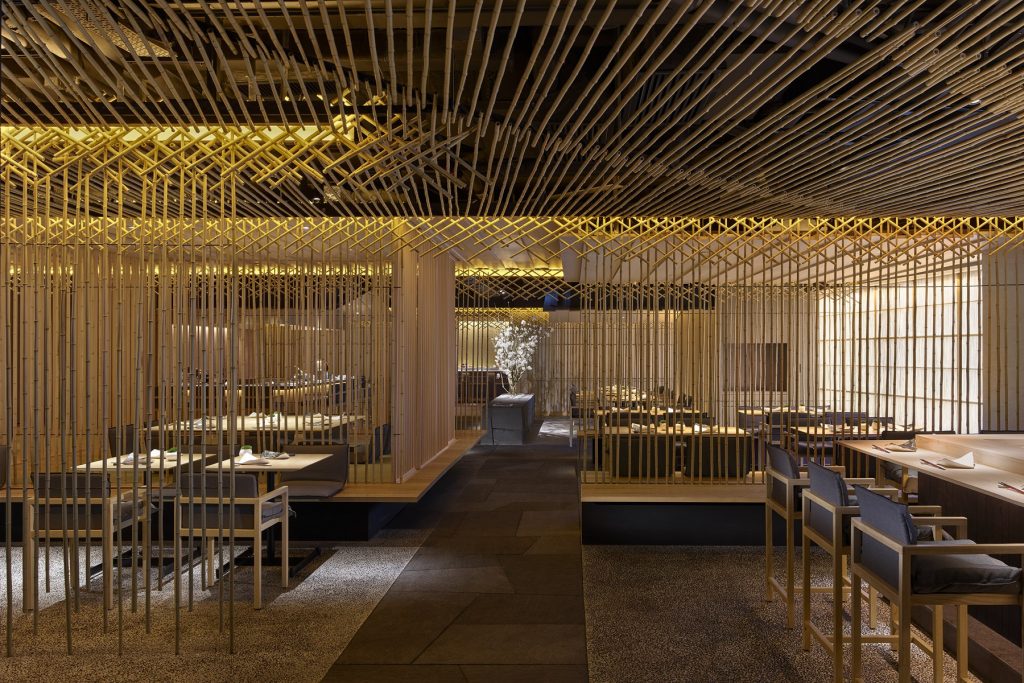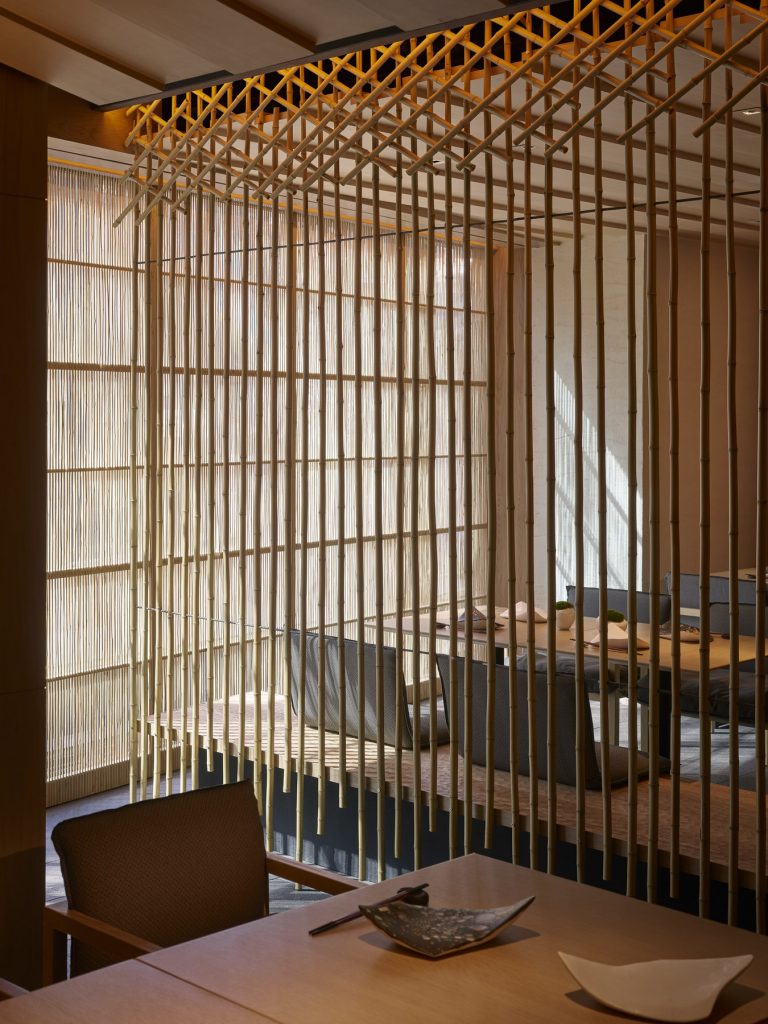If there’s one material that most intimately links China and Japan to the present day, it’s bamboo.
The wonder plant has been used throughout the long histories of these two societies, in everything from food and writing implements, to clothes and construction – it’s a given on any street in Hong Kong that at least one building will be covered with intricate bamboo scaffolding.
Bamboo also lends its name to the newest heavyweight arrival in the local Japanese restaurant scene. Ta-ke, which borrows its name from the Japanese word for bamboo, is as much a design hotspot as much as it is a culinary destination – as the first restaurant project completed under prominent local interior designer Steve Leung’s SLX platform, the space was designed by none other than world-renowned Japanese architect Kengo Kuma.
Applying facets of his innovative makeru kenchiku” (losing architecture”) philosophy – which paints buildings as a form of communion between man and nature, resulting in designs that are uniquely aware of their immediate context use materials that resonate with nature.
Within the restaurant, Kengo Kuma gravitated towards the transformative qualities of bamboo, with its unique ability to both elevate and add levity to any interior. At the recent launch event for Ta-ke, we talked to Kuma-san about how to use bamboo to bring the outdoors in, and how to manipulate natural light with this most traditional and symbolic of materials.
See more: How to create a tropical resort vibe at home

Think of your home as a garden
We were very much inspired by Katsura Villa [an imperial residence in Kyoto]. People now think that it was a beautiful garden, but the real use of Katsura was for drinking and eating. There are many pavilions and a big pond there, which were in dialogue with nature. Today, people have forgotten about that interesting use of space, so the aim of this restaurant is to recover that active eating space in nature.”
HJ tip: Don’t limit yourself to decorating your home with strictly interior materials. Bamboo is a great material to start with since it is so evocative of nature, but don’t be afraid to build on this by incorporating elements like pebbles and bonsai to add layers to a space.

Use transparent bamboo screens to create pavilions”
In the restaurant we used sumushiko transparent screens created in Kanazawa, Japan, which were made by slicing bamboo down to 5mm in thickness and arranging them in parallel strips. I wanted to show the possibilities of bamboo in making a space very calm and very quiet.
HJ tip: Use bamboo screens or blinds to preserve a sense of openness within a large, open-plan space while carving out smaller pavilions” to create a feeling of intimacy. Differentiate these pavilions by varying the thickness of the bamboo, the width of the spaces between, or arranging them in a crosshatch pattern.
See more: How to create a flourishing oasis at home

… Or to create beautifully shifting natural light
Time is very much related with nature. For example, over [the course of] one day, the direction of natural light moves slowly, and the atmosphere can differ through the morning, noon and night, and change even more dramatically over a year. A bamboo screen can enhance the effect of nature and filter natural light in a very sophisticated way. Every day and every season, individuals can enjoy [the passage of time] in an interior space.”
HJ tip: Bamboo screens can also be beautifully lit from their base for a warm, diffused ambience at night. Line an entrance corridor or a garden wall with this set-up to inject a sophisticated dose of nature even when it’s dark out.
The post Architect Kengo Kuma on how to use bamboo within your home appeared first on Home Journal.






